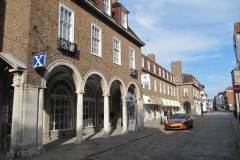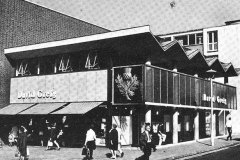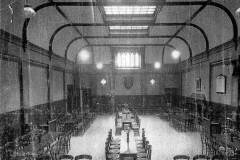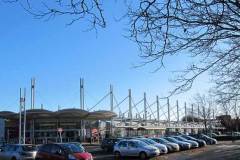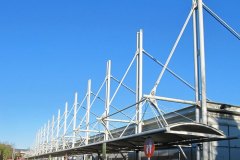Examples
In the Canterbury commercial context, the break with traditional styles, building materials and techniques of construction, came piecemeal with some (not much) of the re-building of the war-damaged city post WW2. The first large scale retail development (Burgate House 1950) was financed by the people of Canada. It followed traditional neo-Georgian lines, A successor, David Grieg (1954) was quite revolutionary, with its serrated roof vaulting set on a colonnade. It scraped through city council approval by 11 votes to 9 despite lack of support from the planning committee.
Click links above for further detail.
Burgate House (traditional) and David Grieg (modern)
Former Nasons
A different architectural skill is to blend new work with existing older styles. Nason’s High Street store won accolades, including a Civic Trust Award, for its successful absorption of earlier buildings and spaces into its retail development of 1962. The Civic Trust citation (1963) mentions the successful retention of references to St Mary Breadman church and the former Foresters’ Hall, with sensitive pavement lighting.
Sainsburys
A more recent example of a totally ‘modern’ approach was the erection of Sainsburys store at Kingsmead in 1984, on the site of the former city electricity generation plant.
This was the first Canterbury building to go ‘high tech’, and was widely regarded as controversial. Striking features include the roof suspended on cables from dramatic external steel uprights. The building was awarded the Structural Steel Design Award in 1985 and the Civic Trust Award in 1986.

